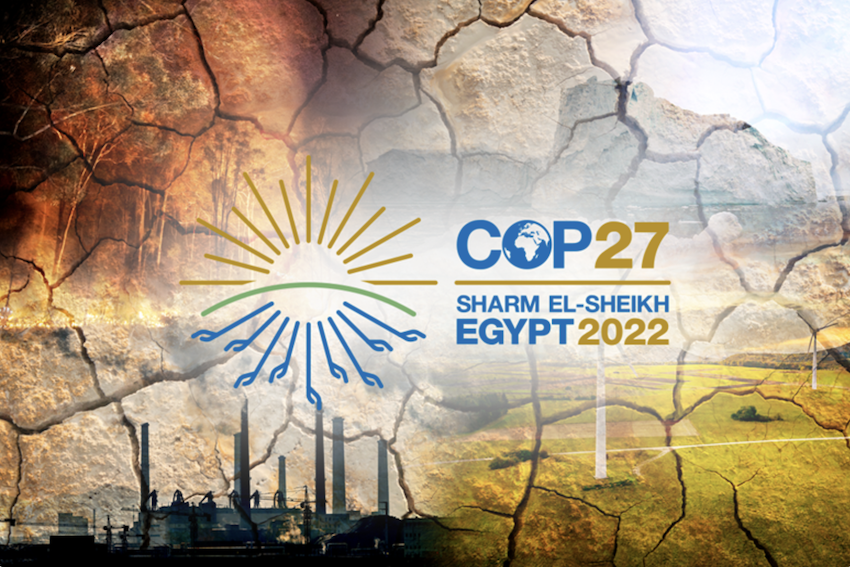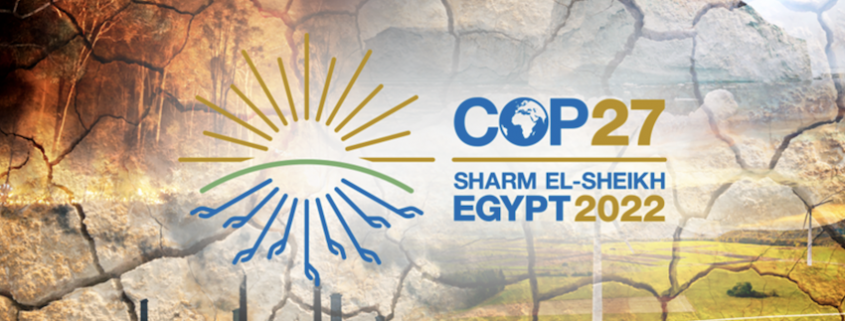COP27 launches loss and damage fund but makes no progress on fossil fuels

For the first time, rich countries accepted setting up a loss and damage fund to compensate poor countries that have contributed the least to climate change for its negative impacts, such as floods, hurricanes, droughts and sea level rise. The value and composition of the fund were not detailed. This will be left for the next conferences.
On the other hand, the COP27 final communiqué did not advance in relation to last year, towards including oil and gas among the fossil fuels that need to stop being used. Only coal was explicitly mentioned. Resistance came from Saudi Arabia, Iran, Russia and other major oil producers. There was a marked presence of authorities and executives linked to the oil industry, compared to COP26, held a year ago in Scotland. Next year doesn’t look more promising: the next COP will be held in the United Arab Emirates.
Scheduled to end on Friday, the conference dragged on until Sunday morning because of disagreements around these two points: the damages fund and the mention of fossil fuels.
Called the Implementation Plan, the text pressures developed countries to fulfill the commitment, signed since 2009, to allocate US$ 100 billion a year, starting in 2020, for developing countries to adapt to climate change and reduce its impact.
Following the tradition of its climate diplomacy, Brazil negotiated from within the G77+China, which represents 130 developing countries. In addition to China, the group also includes India. Both are the biggest and the third biggest polluter in the world respectively, because of the use of coal. The US appears in second place among the biggest emitters of greenhouse gases. China is the world’s second largest economy and India is sixth in nominal terms. Adjusted for purchasing power, it would be the third. Even so, these countries are considered recent polluters, when compared to the United States and Europe.
The main points of the ten-page Implementation Plan are as follows:
Funding
“Welcomes the consideration, for the first time, of matters relating to funding arrangements responding to loss and damage associated with the adverse effects of climate change, including a focus on addressing loss and damage, under the Conference of the Parties and the Conference of the Parties serving as the meeting of the Parties to the Paris Agreement and also welcomes the adoption of decisions on matters relating to funding arrangements responding to loss and damage associated with the adverse effects of climate change.”
“Expresses serious concern that the goal of developed country Parties to mobilize jointly USD 100 billion per year by 2020 in the context of meaningful mitigation action and transparency on implementation has not yet been met and urges developed country Parties to meet the goal.”
“Notes with concern the growing gap between the needs of developing country Parties, in particular those due to the increasing impacts of climate change and their increased indebtedness, and the support provided and mobilized for their efforts to implement their nationally determined contributions, highlighting that such needs are currently estimated at USD 5.8–5.9 trillion20 for the pre-2030 period.”
“Highlights the role of the Least Developed Countries Fund and the Special Climate Change Fund in supporting actions by developing countries to address climate change, welcomes the pledges made to the two Funds and invites developed countries to further contribute to the two Funds.”
“Highlights that about USD 4 trillion per year needs to be invested in renewable energy up until 2030 to be able to reach net zero emissions by 2050,18 and that, furthermore, a global transformation to a low-carbon economy is expected to require investment of at least USD 4–6 trillion per year.”
“Also highlights that delivering such funding will require a transformation of the financial system and its structures and processes, engaging governments, central banks, commercial banks, institutional investors and other financial actors.”
Energy
“Calls upon Parties to accelerate the development, deployment and dissemination of technologies, and the adoption of policies, to transition towards low-emission energy systems, including by rapidly scaling up the deployment of clean power generation and energy efficiency measures, including accelerating efforts towards the phasedown of unabated coal power and phase-out of inefficient fossil fuel subsidies, while providing targeted support to the poorest and most vulnerable in line with national circumstances and recognizing the need for support towards a just transition.”
“Emphasizes that accelerated financial support for developing countries from developed countries and other sources is critical to enhancing mitigation action and addressing inequities in access to finance, including its costs, terms and conditions, and economic vulnerability to climate change for developing countries,22 and that scaled-up public grants for mitigation and adaptation for vulnerable regions, in particular sub-Saharan Africa, would be cost-effective and have high social returns in terms of access to basic energy.”
Temperature
“Reiterates that the impacts of climate change will be much lower at the temperature increase of 1.5 °C compared with 2 °C7 and resolves to pursue further efforts to limit the temperature increase to 1.5 °C.”
Emissions
“Recognizes that limiting global warming to 1.5 °C requires rapid, deep and sustained reductions in global greenhouse gas emissions of 43 per cent by 2030 relative to the 2019 level.”

 COP27
COP27
Leave a comment